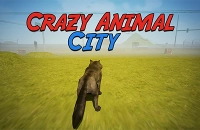Slope 2
Slope 2
Connecting to game server...
0% complete

Slope 2
Click to start playing
🕹️ You May Also Like












Slope 2
The enhanced sequel featuring a ball rolling down infinite slopes at increasing speeds. Navigate narrow passages, avoid red barriers, collect diamonds,.
Slope 2 is the highly anticipated sequel to the beloved endless runner that captivated millions of players. Control a ball as it rolls down an infinite slope filled with deadly obstacles and treacherous drops. The game features improved physics, enhanced graphics, and even more challenging obstacle patterns than its predecessor. As you progress, the speed increases dramatically, testing your reflexes and concentration to the limit. Navigate through narrow passages, avoid red barriers, and collect diamonds while maintaining perfect control of your ever-accelerating ball.
🎮 How to Play
- 1A/D or Left/Right arrow keys to steer the ball
- 2Mouse movement for precise control
- 3No jump button - momentum and gravity control movement
- 4Smooth steering prevents sudden direction changes
💡 Game Tips
- 💡Start with gentle steering movements to maintain control
- 💡Look ahead to anticipate upcoming obstacles
- 💡Use the slope edges for sharp turns when necessary
- 💡Don't panic when speed increases - stay focused
- 💡Practice makes perfect - each run teaches you new patterns
📚Complete Strategy Guide
Master Slope 2 with our comprehensive guide and pro tips
Slope 2 elevates the endless running genre with its thrilling 3D perspective, physics-based challenges, and increasingly intense gameplay that tests reflexes, spatial awareness, and strategic thinking. This sequel to the original Slope game introduces enhanced graphics, more complex obstacles, and refined mechanics that create an addictive experience demanding both quick reactions and long-term planning. Whether you're new to the series or seeking to achieve record-breaking distances, this comprehensive guide will transform your approach to conquering the endless slope.
Understanding Slope 2 Mechanics
Core Gameplay Physics
Ball Movement Dynamics:
- Continuous acceleration - Ball speed increases constantly throughout the run
- Momentum conservation - Physics engine maintains realistic movement patterns
- Gravity effects - Ball naturally pulls downward, affecting jump trajectories
- Surface interaction - Different surfaces may affect rolling speed and control
Control System:
- Left/Right arrow keys - Primary steering controls
- A/D keys - Alternative steering option
- Smooth turning - Gradual direction changes rather than sharp angles
- No stopping - Ball maintains forward momentum at all times
Visual and Environmental Elements
3D Perspective Advantages:
- Depth perception - Better spatial awareness than 2D versions
- Obstacle visibility - Earlier warning of upcoming challenges
- Path planning - Ability to see multiple route options ahead
- Immersive experience - Enhanced sense of speed and movement
Lighting and Visual Cues:
- Neon aesthetics - Bright colors highlight important elements
- Contrast optimization - Clear distinction between safe paths and obstacles
- Speed indicators - Visual effects communicate current velocity
- Danger signals - Color coding warns of hazardous areas
Early Game Strategy (0-500 Distance)
Foundation Building
Initial Control Mastery:
- Gentle movements - Avoid overcorrecting with sharp turns
- Rhythm development - Find comfortable steering cadence
- Speed adaptation - Gradually adjust to increasing velocity
- Visual focus - Train eyes to look ahead rather than at the ball
Basic Obstacle Navigation:
- Red blocks - Solid obstacles that end the game on contact
- Gaps - Empty spaces requiring precise positioning
- Narrow passages - Tight spaces demanding accurate steering
- Ramps and slopes - Elevation changes affecting ball trajectory
Developing Reaction Skills
Anticipation Training:
- Pattern recognition - Learn common obstacle arrangements
- Distance judgment - Develop ability to gauge space requirements
- Timing practice - Master when to begin steering adjustments
- Multi-step planning - Think 2-3 obstacles ahead
Control Refinement:
- Micro-adjustments - Make small steering corrections continuously
- Smooth inputs - Avoid jerky, panicked movements
- Consistent pressure - Apply steady control input rather than rapid tapping
- Recovery techniques - Learn to correct from near-miss situations
Intermediate Mastery (500-2000 Distance)
Advanced Obstacle Patterns
Complex Formations:
- Zigzag sequences - Alternating left-right obstacle patterns
- Funnel structures - Gradually narrowing pathways
- Multi-level challenges - Obstacles at different elevations
- Speed trap sections - Areas designed to catch accelerating players
Strategic Path Selection:
- Route optimization - Choose paths that maintain better positioning
- Risk assessment - Balance safe routes versus challenging shortcuts
- Flow maintenance - Select paths that preserve smooth movement
- Future positioning - Consider where each path leads for subsequent obstacles
Speed Management Techniques
Velocity Adaptation:
- Gradual adjustment - Slowly adapt reflexes to increasing speed
- Look-ahead distance - Extend visual focus as speed increases
- Reaction time compensation - Account for reduced response time at high speeds
- Smooth steering - Maintain control precision despite increased velocity
High-Speed Strategies:
- Predictive steering - Begin turns before obstacles become critical
- Center positioning - Stay near path center when possible for maximum options
- Emergency protocols - Develop standard responses for crisis situations
- Calm maintenance - Keep steady nerves during intense high-speed sections
Advanced Techniques (2000+ Distance)
Expert-Level Skills
Precision Navigation:
- Pixel-perfect steering - Navigate extremely tight spaces
- Threading the needle - Pass through minimal gaps consistently
- Edge riding - Use path boundaries strategically
- Bounce control - Manage ball physics after contact with edges
Pattern Mastery:
- Sequence memorization - Remember recurring obstacle patterns
- Adaptive strategies - Modify approach based on obstacle variations
- Rhythm integration - Develop natural timing for complex patterns
- Flow optimization - Achieve smooth movement through difficult sections
Mental Game Excellence
Concentration Management:
- Extended focus - Maintain attention during long runs
- Pressure handling - Stay calm when approaching personal bests
- Distraction resistance - Keep focus despite increasing intensity
- Mental endurance - Sustain performance over extended periods
Performance Psychology:
- Confidence building - Trust developed skills during challenging moments
- Mistake recovery - Bounce back quickly from near-misses
- Zone achievement - Enter flow state for optimal performance
- Positive visualization - Mentally rehearse successful navigation
Scoring and Distance Optimization
Point System Understanding
Distance Scoring:
- Continuous accumulation - Points increase with distance traveled
- Milestone bonuses - Special rewards for reaching certain distances
- Survival multipliers - Extended runs may earn bonus multipliers
- Consistency rewards - Regular play may unlock achievement bonuses
Maximization Strategies:
- Survival priority - Focus on distance over risky point collection
- Efficiency routes - Choose paths that maximize distance potential
- Risk management - Avoid unnecessary dangers that could end runs
- Long-term thinking - Play for maximum distance rather than quick points
Record-Breaking Techniques
Personal Best Pursuit:
- Incremental improvement - Aim for gradual distance increases
- Consistency development - Achieve reliable performance levels
- Skill refinement - Continuously improve weakest areas
- Mental preparation - Develop pre-game routines for peak performance
World Record Strategies:
- Perfect execution - Master every aspect of obstacle navigation
- Endurance training - Build stamina for extremely long runs
- Pattern expertise - Know optimal solutions for all obstacle types
- Pressure performance - Maintain skills during record attempts
Common Mistakes and Solutions
Control Errors
Problem: Overcorrection
- Symptom - Making large steering adjustments that cause oscillation
- Consequence - Loss of control and potential collision with obstacles
- Solution - Practice making smaller, more precise movements
- Prevention - Develop smooth, gradual steering habits
Problem: Panic Steering
- Symptom - Frantic movements when approaching obstacles
- Consequence - Loss of precision and increased collision risk
- Solution - Focus on calm, deliberate control inputs
- Prevention - Practice breathing techniques and mental preparation
Strategic Mistakes
Problem: Tunnel Vision
- Symptom - Focusing only on immediate obstacles, missing upcoming challenges
- Consequence - Poor positioning for subsequent obstacles
- Solution - Train eyes to look further ahead
- Prevention - Practice peripheral vision and multi-obstacle awareness
Problem: Conservative Play
- Symptom - Avoiding all risks, even when safe paths exist
- Consequence - Missed opportunities and suboptimal positioning
- Solution - Gradually build confidence through practice
- Prevention - Learn to distinguish real risks from perceived dangers
Mental Game Issues
Problem: Performance Anxiety
- Symptom - Playing worse when close to personal bests
- Consequence - Choking during important moments
- Solution - Focus on process rather than outcomes
- Prevention - Practice pressure situations and develop coping strategies
Problem: Fatigue Effects
- Symptom - Declining performance during long runs
- Consequence - Mistakes in later stages of promising runs
- Solution - Build mental endurance through extended practice sessions
- Prevention - Develop stamina and concentration through regular training
Training and Improvement Methods
Skill Development Exercises
Control Precision Training:
- Slalom practice - Navigate through tight, repeating patterns
- Edge control - Practice riding along path boundaries safely
- Recovery drills - Intentionally create difficult situations and escape
- Smooth steering - Focus on eliminating jerky movements
Reaction Time Enhancement:
- Speed progression - Gradually increase difficulty levels
- Pattern recognition - Study and memorize common obstacle arrangements
- Peripheral vision - Practice awareness of multiple simultaneous threats
- Quick decision making - Train rapid route selection skills
Mental Training
Focus Development:
- Meditation practice - Build concentration and mental clarity
- Visualization exercises - Mentally rehearse perfect runs
- Breathing techniques - Maintain calm during intense gameplay
- Mindfulness training - Stay present and avoid overthinking
Pressure Management:
- Simulated pressure - Create artificial stakes during practice
- Progressive exposure - Gradually increase stress levels during training
- Confidence building - Celebrate small improvements and successes
- Positive self-talk - Develop encouraging internal dialogue
Advanced Features and Variations
Game Mode Exploration
Different Difficulty Levels:
- Practice modes - Slower speeds for skill development
- Challenge modes - Specific obstacle patterns or constraints
- Speed variations - Different acceleration curves
- Custom settings - User-defined difficulty parameters
Multiplayer Elements:
- Leaderboard competition - Global rankings for motivation
- Social sharing - Compare scores with friends
- Community challenges - Participate in special events
- Replay systems - Study top players' techniques
Technical Optimization
Performance Settings:
- Graphics quality - Balance visual appeal with smooth performance
- Control sensitivity - Adjust steering responsiveness
- Display optimization - Screen resolution and refresh rate considerations
- Input lag reduction - Minimize delay between control input and game response
Hardware Considerations:
- Mouse vs. keyboard - Choose optimal control method
- Monitor refresh rate - Higher rates may improve performance
- System specifications - Ensure adequate hardware for smooth gameplay
- Network stability - Important for online features and leaderboards
Conclusion: Mastering the Endless Descent
Slope 2 represents the evolution of endless running games, combining simple controls with complex challenges that reward both quick reflexes and strategic thinking. Success requires developing a comprehensive skill set encompassing precise control, pattern recognition, mental resilience, and the ability to maintain focus under increasing pressure.
Key Success Principles:
- Smooth control - Develop precise, gradual steering techniques
- Look ahead - Train visual focus to anticipate upcoming challenges
- Stay calm - Maintain composure as speed and difficulty increase
- Practice consistently - Regular play builds muscle memory and confidence
- Learn from failure - Analyze mistakes to improve future performance
Your Development Journey:
- Control mastery - Perfect basic steering and obstacle navigation
- Speed adaptation - Learn to maintain precision at increasing velocities
- Pattern recognition - Develop ability to quickly identify and solve obstacle patterns
- Mental training - Build focus, confidence, and pressure management skills
- Expert execution - Achieve consistent high-level performance
Final Thoughts: Slope 2 offers an endless challenge that grows with your skills, providing constant opportunities for improvement and mastery. Each run presents unique combinations of familiar elements, ensuring that the game remains fresh and challenging even after hundreds of attempts. The combination of simple mechanics and complex execution creates a perfect learning environment where improvement is always possible.
The slope awaits your mastery. With its neon glow and infinite descent, it challenges you to push the boundaries of reaction time, precision, and mental fortitude. How far down the slope will your skills take you?